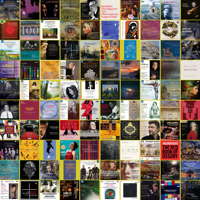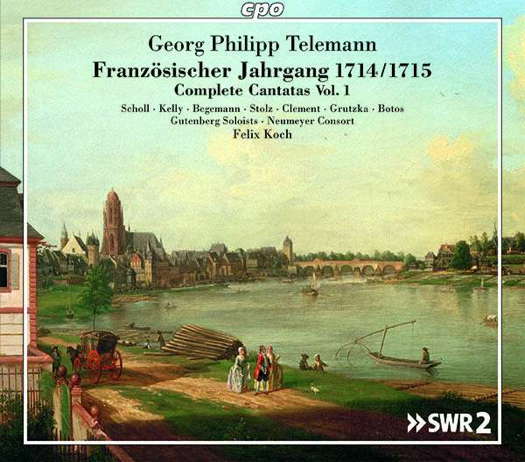 DISCUSSION: What is a work? John Dante Prevedini leads a discussion about The performing artist as co-creator, including contributions from Halida Dinova, Yekaterina Lebedeva, Béla Hartmann, David Arditti and Stephen Francis Vasta.
DISCUSSION: What is a work? John Dante Prevedini leads a discussion about The performing artist as co-creator, including contributions from Halida Dinova, Yekaterina Lebedeva, Béla Hartmann, David Arditti and Stephen Francis Vasta.
 DISCUSSION: John Dante Prevedini leads a discussion about Composers, individuals or collective?, including contributions from David Arditti, Halida Dinova, Robert McCarney and Jane Stanley.
DISCUSSION: John Dante Prevedini leads a discussion about Composers, individuals or collective?, including contributions from David Arditti, Halida Dinova, Robert McCarney and Jane Stanley.
 UPDATES: There's a new feature every day at Classical Music Daily. Read about the various ways we can keep in touch with you about what's happening here.
UPDATES: There's a new feature every day at Classical Music Daily. Read about the various ways we can keep in touch with you about what's happening here.

Legacy and Influence
GERALD FENECH listens to cantatas by Telemann
'... performances of the utmost beauty ...'
Georg Philipp Telemann (1681-1767) was one of the most prolific major composers of all time. His all-encompassing oeuvre comprises more than three thousand compositions, half of which have been lost, and most of which have not been performed since the eighteenth century. From 1708 to 1750, the year of J S Bach's death, Telemann composed 1,043 sacred cantatas and six hundred overture-suites, and types of concertos for combinations of instruments that no other composer of the time employed.
What is the legacy and influence, then, of this great German composer? The first accurate estimate of the number of his works was provided by musicologists only during the 1980s and 1990s when extensive thematic catalogues were published. During his lifetime and the latter half of the eighteenth century, Telemann was very highly regarded by colleagues and critics alike. Numerous theorists such as Quantz and Scheibe cited his works as models, and major composers such as J S Bach and Handel bought and studied his published works. He was immensely popular not only in Germany but also in the rest of Europe.
It was only in the early nineteenth century that his popularity came to an abrupt halt. Most lexicographers started dismissing him as a composer who was more interested in quantity rather than quality, and whose number of compositions was by far in excess of what was expected. After the Bach revival, Telemann's works were judged to be inferior and lacking in deep religious feeling. Indeed, the Bach biographers Philipp Spitta and Albert Schweitzer criticised Telemann's cantatas, but then praised works they thought were composed by Bach but which were in fact composed by Telemann. The revival of interest in Telemann began in earnest in the first decades of the twentieth century and culminated in the Barenreiter critical edition of the 1950s.
Today each of his works is usually given a TWV number, which stands for Telemann-Werke-Verzeichnis (Telemann Works Catalogue). Telemann's music was one of the driving forces behind the late Baroque and the early classical styles. Starting in the 1710s, he became one of the creators and foremost exponents of the so-called German mixed style, an amalgam of German, French, Italian and Polish styles. Over the years his music gradually changed and started incorporating more and more elements of the galant style, but he never completely adopted the ideals of the nascent classical era. Telemann's style remained contrapuntally and harmonically complex, and already in 1751 he dismissed much contemporary music as too simplistic. Composers he influenced musically included pupils of J S Bach in Leipzig, as well as those who performed under his direction in the same city, composers of the Berlin 'lieder' School, and finally his numerous pupils, none of whom, however, became major composers.
CPO has already regaled us with many of Telemann's works; now another large-scale, incredibly exciting project is dedicated to the world's very first complete recording of an entire annual cycle with seventy-two church cantatas by Telemann for large ensemble. This project, directed by Felix Koch, is particularly committed to including young male and female soloists chosen for performances together with proven specialists in the field of Baroque song. This historic undertaking gets under way with this two CD-set of Volume 1, which presents cantatas from the late summer of 1715 and five additional cantatas for the Lenten Season from the cycle known as the 'French Annual Cycle'.
Listen — Telemann: Jesu, meine Freude
(Jesu meine Freude, TVWV 1:966, zum 20 Sonntag nach Trinitatis)
(555 436–2 CD1 track 1, 0:02-1:01) ℗ 2022 cpo :
A significant reference is found on the original Frankfurt part for organ of the composer's cantata Gott schweige doch nicht also from this year: 'Judica', from the 'French Annual Cycle'. What this means is that the cantata concerned was intended for the fifth sunday in Lent, that is, it belonged precisely to the annual cycle of church cantatas that even contemporaries called 'French' because of its style.
Listen — Telemann: Lasset uns mit Christo leiden
(Gott schweige doch nicht also, TVWV 1:678 zum Sonntag Judica)
(555 436–2 CD2 track 26, 0:00-0:59) ℗ 2022 cpo :
This auspicious beginning to the cycle certainly instils in the listener great expectations of things to come. Indeed, Telemann's music has a wonderful sense of proportion, and balance between sound and singing is consistently pleasing. The composer's gift to capture every nuance of the occasion he is writing for is not only astounding but also deeply affecting, and Koch's conducting is inspiring throughout. His Gutenberg Soloists and Neumeyer Consort team respond with performances of the utmost beauty, keeping the music fresh and enjoyable but always focusing on the noble aspect of each piece.
Listen — Telemann: Wer sich ausser Christo Jesu einen Weg in Himmel sucht
(Wer ist der, so von Edom kömmt, TVWV 1:1585)
(555 436–2 CD2 track 30, 2:45-3:40) ℗ 2022 cpo :
This is the start of an enriching journey that should not be missed.
Copyright © 3 August 2022
Gerald Fenech,
Gzira, Malta

CD INFO - TELEMANN: FRANZÖSISCHER JAHRGANG - CANTATAS 1


